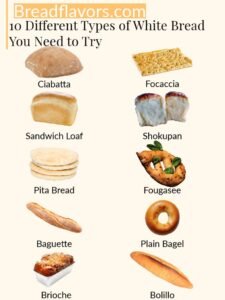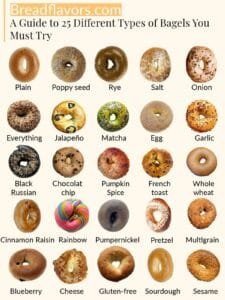Italians’ love affair with dough is legendary. From the strands of fresh pasta to the crispy perfection of pizza and the rustic charm of Italian breads, dough is the heart and soul of Italian cuisine. You may not know this, but this deep rooted passion dates back to Roman civilization when the empire brought different types of wheat from Carthage, such as durum wheat.
Over the centuries, this love for dough has grown, shaping the culinary identity of each region in Italy. From the sunny coasts of Sicily to the Alpine peaks of the north, no village is free of its own style of bread in Italy. Each has its own ingredients, traditions, techniques and preferments.
Whether it’s the chewy Focaccia of Liguria, the crisp Pane Carasau of Sardinia, or the sweet Panettone of Milan. Italian breads reflect the deep cultural and historical of the country connection to flour and water. In this article, we’ll explore the 20 popular types of Italian bread, along with their characteristics, origin, and unique flavor. Read on to find your new favorite Pane Italiano.
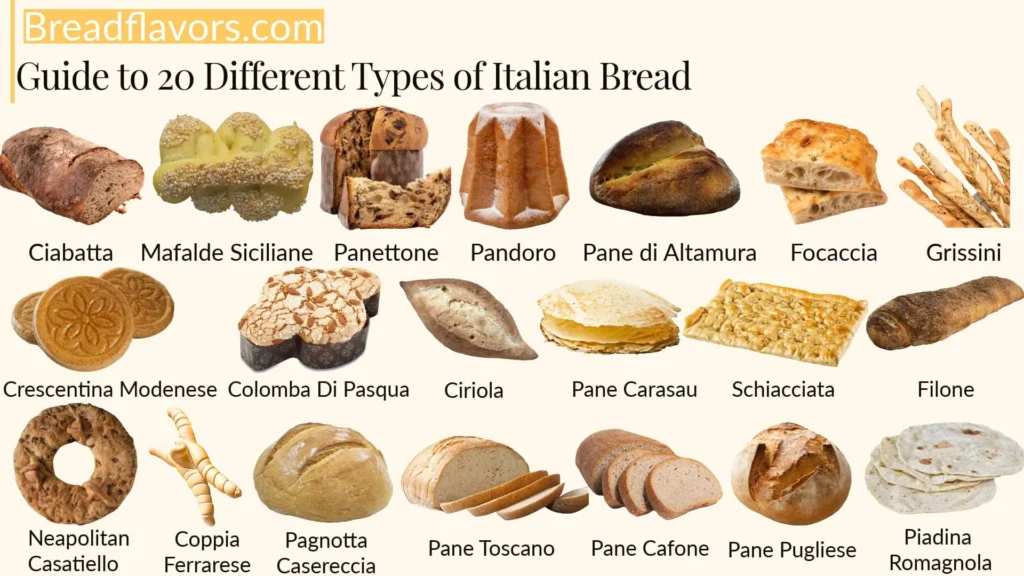
the Most Popular Types of Italian Bread
Ciabatta
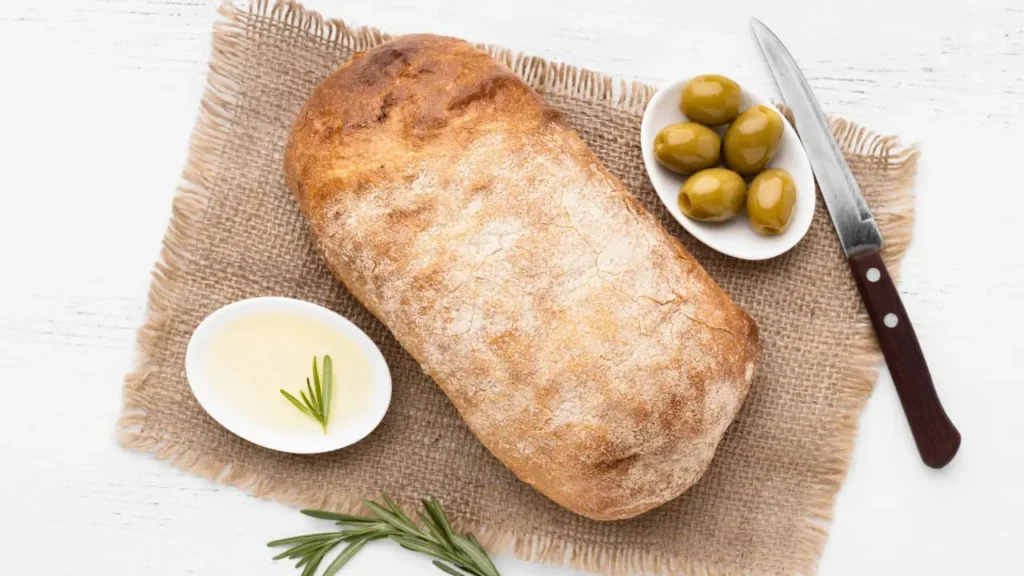
When it comes to Italian breads, ciabatta is a newborn bread, created by Arnaldo Cavallari in the early 1980s. The idea behind ciabatta is to create a bread that could fight the popularity of the baguette at that time. Since then, it has become one of the most popular Italian bread all over the world.
Traditionally, Ciabatta dough is made from four simple ingredients: bread flour, water, salt, and a leavening agent that can vary depending on the preference of baker. But it is often one of the following pre-ferments types: Biga, Poolish, or Lievito Madre.
Despite being one of the best types of bread for grilled cheese, panini sandwiches and more thanks to its crisp crust and large, irregular, open crumb. There are only a few regional varieties of ciabatta that include: Roman, Tuscan, Polesana and Lake Como ciabatta. For more information about this white bread, you can read What is Ciabatta? Or try to make your homemade ciabatta.
Focaccia
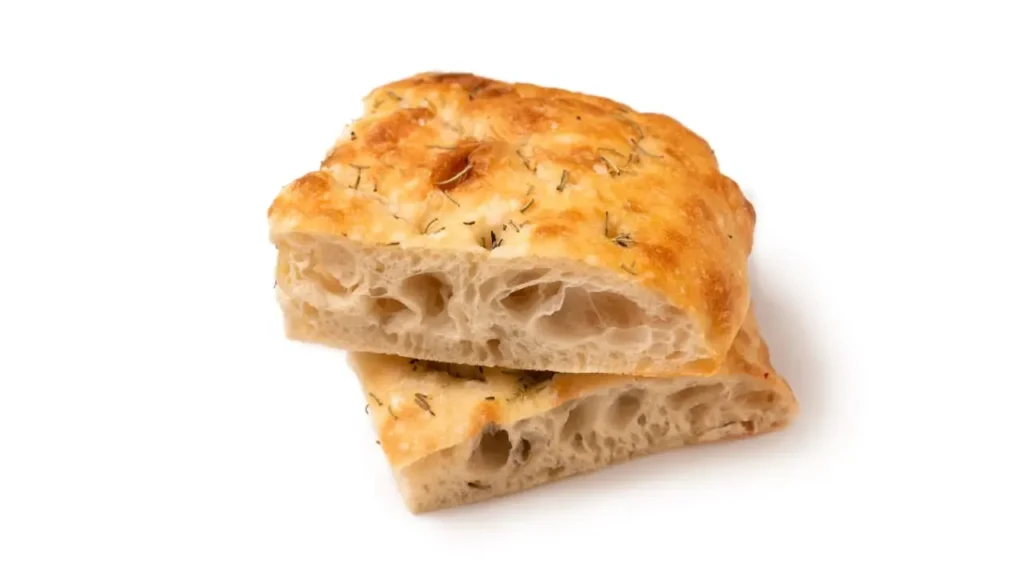
Focaccia is the most famous type of Italian bread. After making the dough and passing it through many rest times called autolyse. A generous coat of olive oil is added to the focaccia, along with an occasional variety of other toppings. The top of the focaccia is dimpled with fingers to create small pockets to trap the flavors of the toppings and prevent it from over-rising.
Many historians believe that this Italian bread type originated with the Etruscans in northern Italy. Before the Roman Empire, or much earlier in ancient Greece. Its name comes from Panis focacius, meaning hearth bread, referring to the fact that focaccia was traditionally baked over charcoal in Roman times.
This long history leads Focaccia to come in many forms: thick or thin, soft or crispy, resulting in many regional variations. Ligurian focaccia, called classica in Genoa, is thin with a crispy crust, while Focaccia di Recco col formaggio is made with two layers filled with Recco cheese. Focaccia Barese is prepared with wheat, semolina flour, and mashed potatoes, then topped with tomatoes, olives, oregano, and rosemary. Sweet versions, like Focaccia con Pinoli e Uvetta, have a soft crumb, a thin crust, and topped with raisins.
Panettone

Panettone (pronounced pah-net-taw-nee) is a type of sweet bread from Milan, Lombardy. It is commonly associated with Italian Christmas traditions, where it is often exchanged as a gift between friends and family.
Traditionally, panettone is made with Milanese sourdough starter, which plays a crucial role in the success of the recipe. Once prepared, the dough passes through a meticulous process that takes two to three days before it is filled with citrus peels and raisins or nuts and chocolate.
The fillings and toppings of panettone can vary throughout the year depending on the occasion. During the Christmas season, panettone is typically filled with raisins and candied fruit, while at other times, it contains sauces of nuts, chocolate chips, or a macaronade—an almond glaze.
Pandoro

Another Italian Christmas bread from the city of Verona is considered the main competitor to panettone during Christmas and New Year’s Eve. This bread is known for its light, fluffy texture, which is achieved through a rich combination of flour, eggs (particularly the egg yolk, which gives it a golden color), butter, sugar, and Lievito madre and baked in a star-shaped mold, typically with an eight-pointed truncated pyramid.
Once baked, the pandoro is sprinkled with powdered sugar to resemble the snow that covers the mountain peaks at this time of year.
Grissini

Grissini, which means breadsticks in Italian, are crispy, thin breadsticks that originated in Turin in the northwestern region of Italy. Unlike many Italian breads that use pre-fermentation, grissini recipe is made from a simple dough composed of flour, water, olive oil, and salt and topped with rosemary, sesame seeds, or salt.
An interesting fact about the origin of grissini is the story that this Italian bread was created by a local baker named Antonio Brunero for the young Duke of Savoy, Vittorio Amedeo II. Who was suffering from digestive issues, and doctors advised him to eat something easily digestible in hopes of stimulating his weak appetite.
Pane Toscano
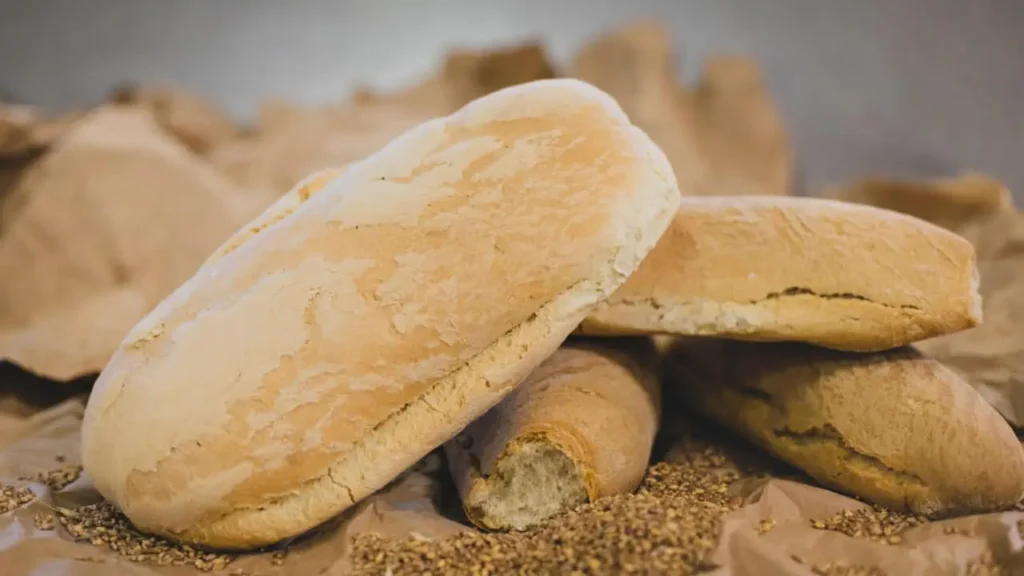
Tuscan bread is one of oldest Italian bread on this list, best known for its lack of salt—so much so that it is also called silly bread. Since the Middle Ages, this Italian loaf has been traditionally made from local wheat flour, water, and a sourdough starter. Then, it goes through a long fermentation process that gives it a long shelf life of up to seven days before it is shaped into an oval or round shape.
Despite the absence of salt, Tuscan bread has a mild, tangy flavor and a crispy golden crust with an irregular, ivory-white crumb, making it a staple in traditional Italian dishes like Rivolta and Pappa al Pomodoro or served with a range of cheeses and salumi.
Piadina Romagnola

Griddled Italian flatbread from Emilia-Romagna, known for its easy preparation method and simple dough ingredients, flour, salt, lard or olive oil, water, and baking soda or powder. Traditionally, Piadina Romagnola was baked on a terracotta slab, though today it’s baked on a griddle. Once baked, this bread is soft, pliable, and crispy on the outside, making it one of the best types of Italian bread for sandwiches and fillings.
Pane di Altamura
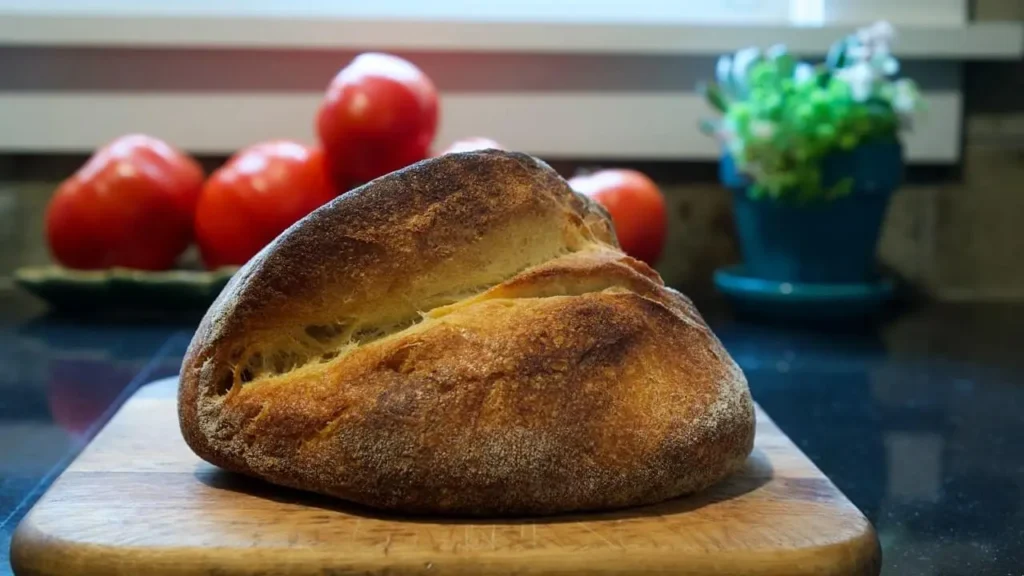
As its name suggests, Pan de Altamura comes from the town of Altamura, where it has been made for centuries. In fact, the Latin poet Horace mentioned this famous bread in his books dating back to the first century BC, as the best bread in the world of that period.
Regardless of its long history, Pane di Altamura has been made for centuries using only durum wheat flour, sourdough starter, salt, and water. After being kneaded and shaped, the top of bread is written with the initials of the father of the family, then baked in traditional bakery ovens, resulting in a very firm crust of at least 3 millimeters and fine yellow crumb.
Mafalde Siciliane
Mafalde Siciliane are traditional Sicilian bread rolls of Arabic origin, known for their twisted shape, light crispy, golden-yellow crust, and very soft interior. Traditionally, these rolls are made with semolina flour, water, salt, sugar, and yeast or biga and dusted with sesame seeds before baking.
In Sicily, Mafalde Siciliane can be found in various sizes, ranging from large to small, where they are commonly used in street food sandwiches stuffed with mortadella.
Schiacciata
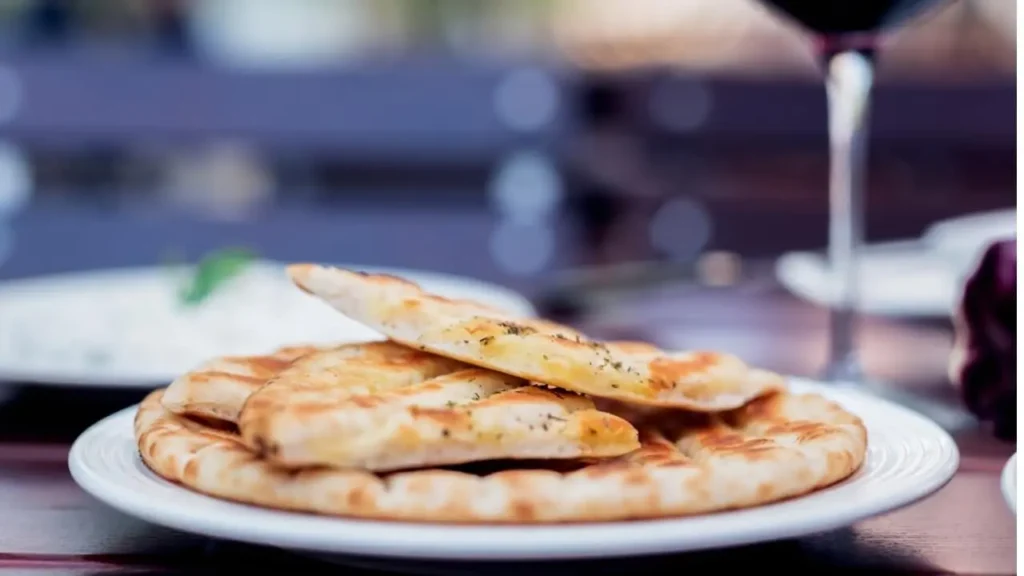
Another delicious Italian bread comes from Tuscany. Schiacciata is a type of flatbread similar to focaccia, but usually thinner, crisper, and much easier to make. Its name comes from the Italian word schiacciare, which literally means to press or to flatten, referring to the fact that the dough needs to be pressed or flattened.
Traditionally, Schiacciata is prepared the day before by making the biga and letting it ferment for more than 24 hours to add complexity to the bread’s flavor. The next day, the dough is mixed with flour, water, and other bread ingredients before being shaped, dimpled, and coated with olive oil.
Schiacciata can be served as an appetizer or accompaniment to Italian food like any bread, but most bakers often sell this bread as sandwiches stuffed with local cheeses, tomatoes, and oregano.
Pane Carasau
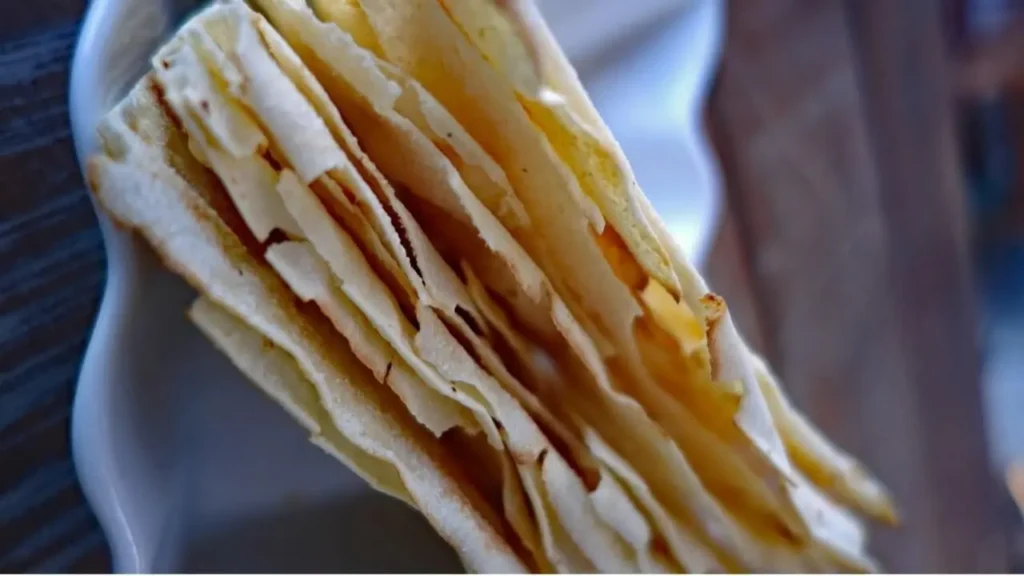
Also called “Carta Moschia”, due to the sound it makes when broken and eaten. Pane Carasau is a true symbol of Sardinia and one of the oldest types of bread in Italy, with origins dating back to the Nuragic period. Carasau bread was once a longtime staple food for Sardinian shepherds on their journeys.
This authentic Italian bread is made from wheat or rye flour, yeast, salt, and water, then rolled into a round sheet about 40 centimeters long and a few millimeters thick before undergoing a double baking process in a traditional high-temperature oven, ending with toasting, called carasatura.
Pane Cafone
The rustic bread of Naples dates back to the 18th century. The bread takes its name from the word “i cafoni,” which means peasant, as they were the first to make it using sourdough and whole wheat flour. Traditionally, Pane Cafone is baked in a pizza oven but at lower temperatures, resulting in a large loaf with a thick brown crust and moist crumb with very small air pockets.
Nowadays, this bread is often made using bread flour and biga and is often served at the table along with dipping sauces such as scarpetta. It can also be easily found as an accompaniment to street food or filled with Neapolitan sauce and Topus alla Luciana.
Filone
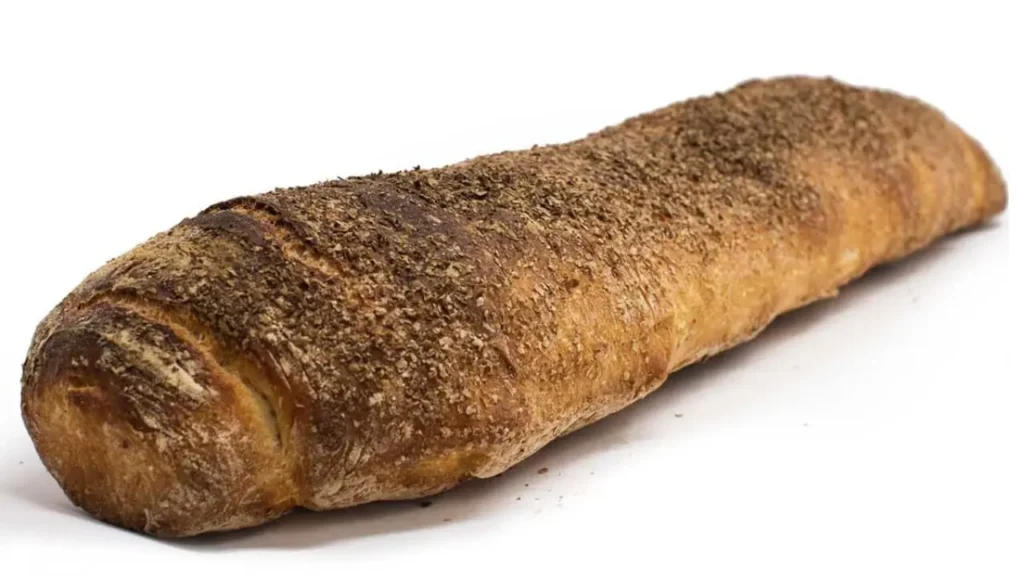
Filone is an everyday rustic Italian loaf that originated in Calabria, with a texture and shape similar to French baguette but bigger. Its name comes from the Italian word “filo”, meaning line, in reference to its elongated shape.
Like other types of white bread, Filone dough is made with only flour, yeast, water, and salt, then flattened and rolled into its long shape. Its hard, crunchy crust and light, airy crumb interior make it widely used throughout Italy and perfect for slicing and serving with cheese dishes and soups.
Coppia Ferrarese
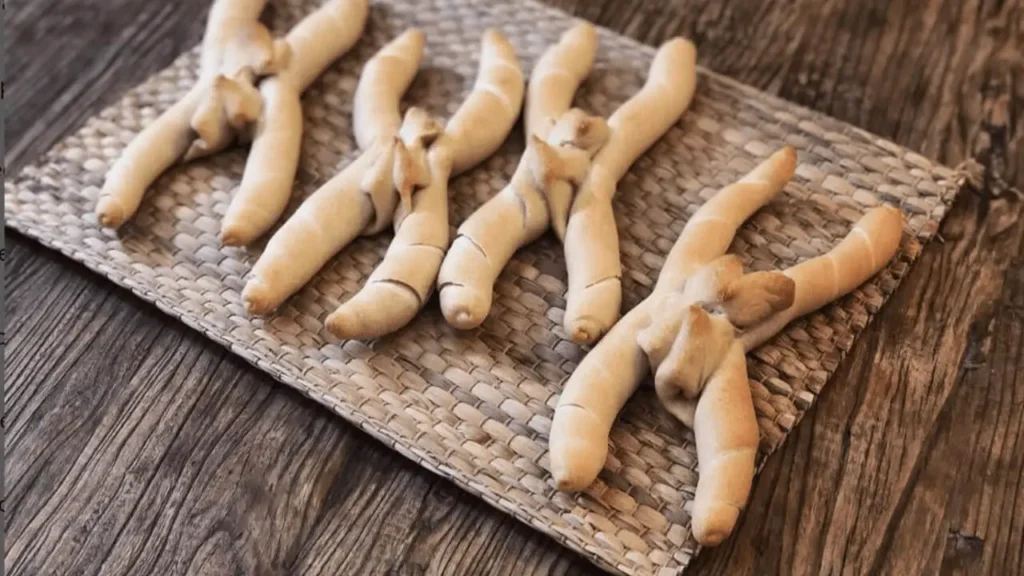
Also called Pane Ferrarese, is a unique type of Italian bread native to the province of Ferrara. Coppia Ferrarese is known for its distinctive shape, consisting of two dough pieces connected in the center, forming 4 twisted horns called “crostini”.
This unique Italian bread is made from a dough that contains flour, olive oil, salt, sourdough starter, water, and sometimes lard and malt. Its appealing shape and distinctive taste have made it one of the best Italian types of bread. In 2001, Coppia Ferrarese received the IGP certificate, a certificate that guarantees the authenticity and regional origin of specific products.
Neapolitan Casatiello
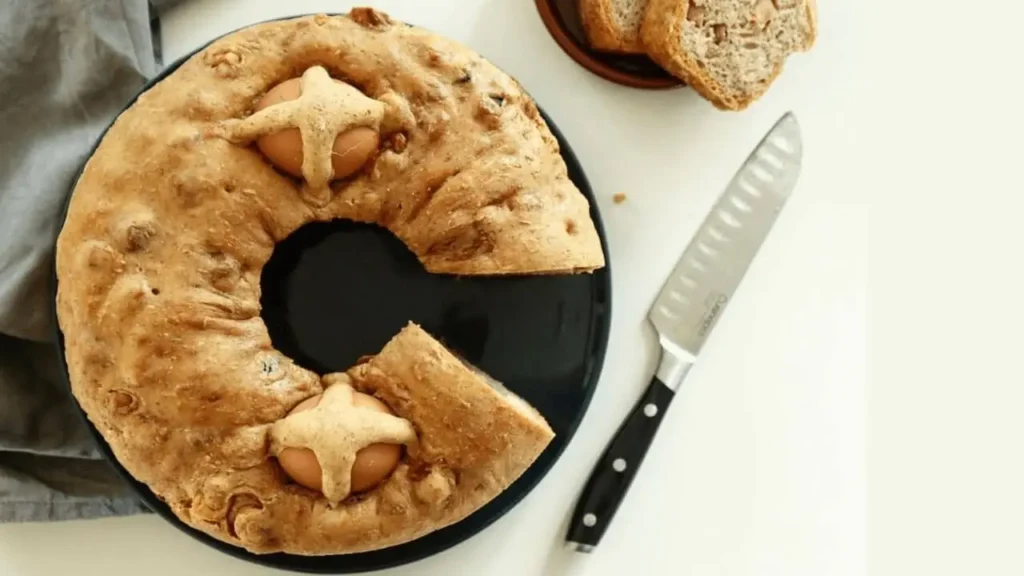
Also known as Neapolitan Casatiello, an Italian Easter bread made with yeasted dough that contains lard or olive oil. Traditionally, this bread is filled with each family’s favorite fillings, such as salami, ham, and local cheese, then rolled and decorated with boiled eggs before baking it in a ring-shaped mold.
Colomba Di Pasqua
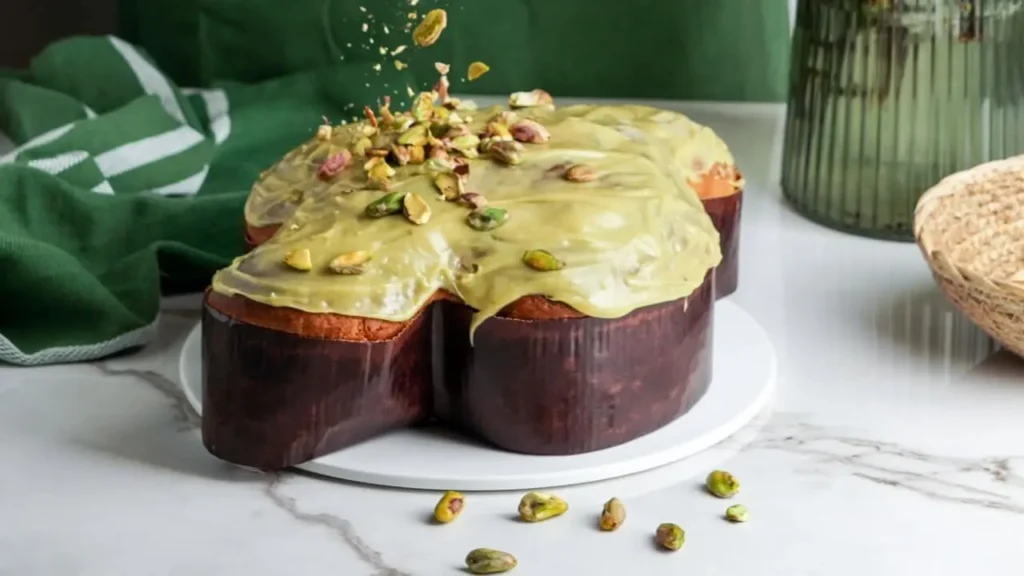
Also called Colomba Pasquale, it is a traditional Easter bread with the shape of a dove to represent the Holy Spirit. This iconic Italian bread was first prepared by a Milanese baker called Angelo Motta as an Easter counterpart to Christmas specialties, and it is still a favorite during the Easter celebrations in Italy.
Traditionally, Colomba Di Pasqua is made from an enriched dough, much like panettone and pandoro, and is filled with candied peel or nut cream before being covered with pearl sugar, chocolate chips, or nuts.
Pane Pugliese

Pane Pugliese is an original bread from Puglia, dating back to the 15th century. It is made from a mixture of durum wheat flour and bread flour and has a crispy crust and a dense yellow crumb, making it very similar to Altamura bread.
Pane Pugliese can be found in different sizes but is usually large, between 2 and 3 kg, and can be kept for about 4 days, retaining their inner softness. The exact recipe for this classic Italian bread can vary, as it can be made with sourdough, yeast, or Biga.
Pagnotta Casereccia

Pagnotta Casereccia, literally translated to homemade bread. It is a traditional round loaf, known for its crusty exterior and soft, airy crumb that is similar to the French boule bread. Traditionally, this homemade bread is made from durum wheat or wheat flour, water, yeast or sourdough, and salt, resulting in a thick, crispy exterior and soft, airy crumb inside.
Crescentina Modenese

Crescentina Modenese is a round, thin, flat bread from the Modena area in the Emilia-Romagna region and is made from basic dough of bread flour, water, milk, yeast, salt, and sometimes enriched with lard, olive oil, or butter. Traditionally, this bread was baked in a tegeli, as it is called in some Italian regions. But nowadays it is widely baked in electric grills or in a special aluminum pan called tegeliera.
Ciriola

Ciriola is a traditional Roman bread from the Lazio region of Italy. It is a small loaf that looks like Mexican bolillo bread and usually weighs between 70 and 100 grams. Its name comes from the Italian word for candle, cerola, in reference to its shape.
Ciriola should be prepared the day before, as it needs biga or poolish and then is mixed with flour, olive oil, salt, and sugar. The result is a soft crumb interior and a crunchy, golden crust. This bread is usually eaten fresh, as it dries quickly, with a filling of porchetta di Ariccia or Lazio salami, but its versatility makes it ideal for rustic sandwiches and panino.
Other Italian Bread Types to Try
- Puccia: Round flat bread from the Puglia region of southern Italy, made from durum wheat flour and baked in a wood-fired oven, known for its soft, chewy texture.
- Pane di Matera: Kind of Italian bread that dates back 1,000 years, making it unique thanks to the use of local ingredients: Sourdough, salt, water and semolina flour that comes from a local variety of wheat.
- La Mantovana: Made with a firm, lean dough, it has a soft interior and a crispy crust.
- Pane Nero valdostano: Also called “pane Ner”, a type of rye bread, often enriched with raisins and nuts. It has a hard crust, a firm crumb, and a sour taste due to its being made using a sourdough starter.
- Ciopa Veneta: The most popular Italian bread in the Veneto region, it is made from a firm dough of flour, water, yeast or sourdough, and salt.
- Pane di Lariano: A popular loaf in Latium, known for its golden crust and very soft interior, one of the characteristics of this bread is that it can last for up to 5 days.
- Pane Tartaruga: Meaning turtle bread, because of its shape resembling a turtle’s carapace, its soft crumb makes it one of the best bread to use in sandwiches.
- Pane di Genzano: Homemade bread that has been made for centuries, is recognized by the IGP certification and has a dark color.
- Mantovana: Made from lean dough with a low hydration level. It has a crispy crust and firm crumb.
- Pane Di Zucca: Pumpkin bread made with boiled pumpkin. When baked, the bread has a crispy crust, a spongy interior and a slightly sweet flavor.
- Michetta: Originally from Milan and made from a leavened dough of biga, bread flour, water and salt. It is crispy on the outside and hollow on the inside.

